Paper fan sponge
Phyllospongia papyracea
Phyllospongia papyracea is a foliose (leaf-like) sponge which is widely distributed along the tropical coasts of Western to Eastern Australia. As the species name suggests (derived from "papyrus"), this sponge is very thin and has a smooth surface texture. P. papyracea, like other members of the Order Dictyoceratida, do not produce their own siliceous spicules. P. papyracea forms a symbiotic relationship with photosynthetic cyanobacteria, and relies on sunlight to supply part of its nutrition. The colour of this sponge is brown to beige when alive.
Morphology
This sponge has thin, fan-like to strap-like morphology, and is found attached to the substrate by a stalk. The surface of the sponge is smooth.
Evolution
There are a total of 10 Phyllospongia species, with some members sharing morphological features similar to the genus Carteriospongia, often causing identification problems. Ongoing molecular and morphological work on sponges within the sub-family Phyllospongiinae is providing improved resolution and certainty in the systematics of these sponges.
Behaviour
Sessile; Filter feeder
Method of reproduction
Sexual and asexual. Broods larvae.
Habitat
Marine
P. papyracea can be quite common in clear water marine habitats such as reefs, lagoons and intertidal flats.
Distribution
Widely distributed along the tropical coasts of Western to Eastern Australia. It has also been reported in the Indo-Pacific to the Red Sea.
Life Cycle
Fertilisation occurs internally in adult sponges and larvae develop internally.
| Kingdom: | Animalia |
|---|---|
| Phylum: | Porifera |
| Class: | Demospongiae |
| Order: | Dictyoceratida |
| Family: | Thorectidae |
| Subfamily: | Phyllospongiinae |
| Genus: | Phyllospongia |
| Species: | papyracea |
| Name Published Year: | 1794 |
|---|---|
| Scientific Name Authorship: | Esper |
| Commercial Impact: | None |
| Conservation Assessment: | Least Concern |
Cite this page
Western Australian Museum Collections https://museum.wa.gov.au/online-collections/names/phyllospongia-papyracea
Accessed 6 Dec 2025
Rights
We support the open release of data and information about our collections.
Text content on this page is licensed under a Creative Commons Attribution 4.0 International License.
Image content on this page is copyright WA Museum.


